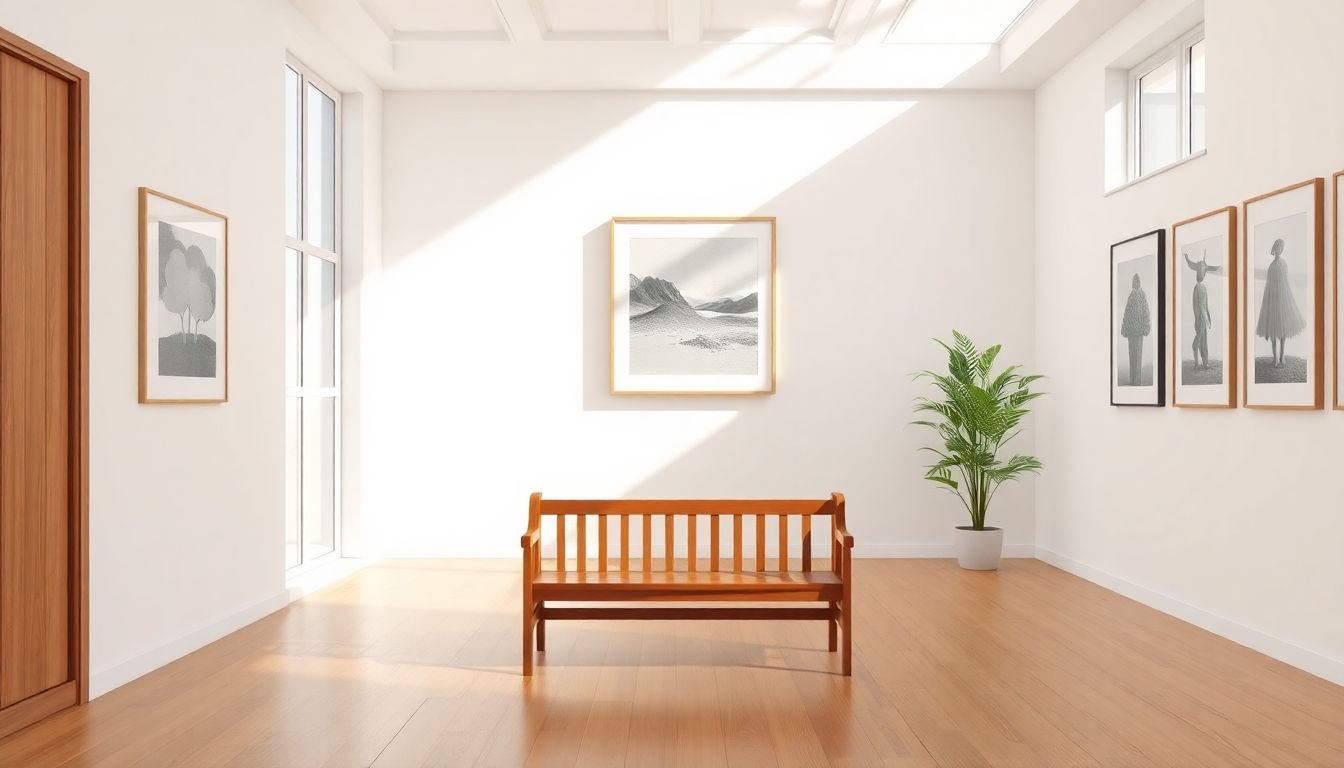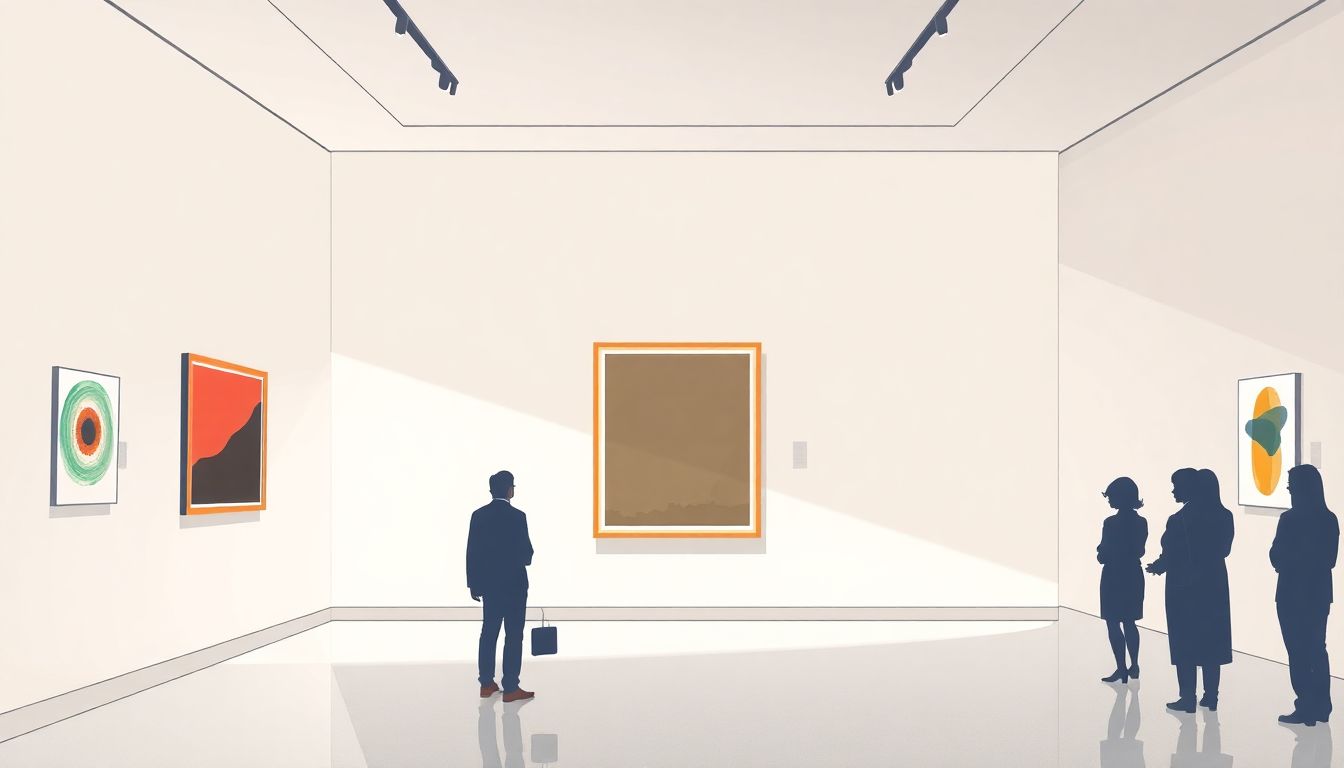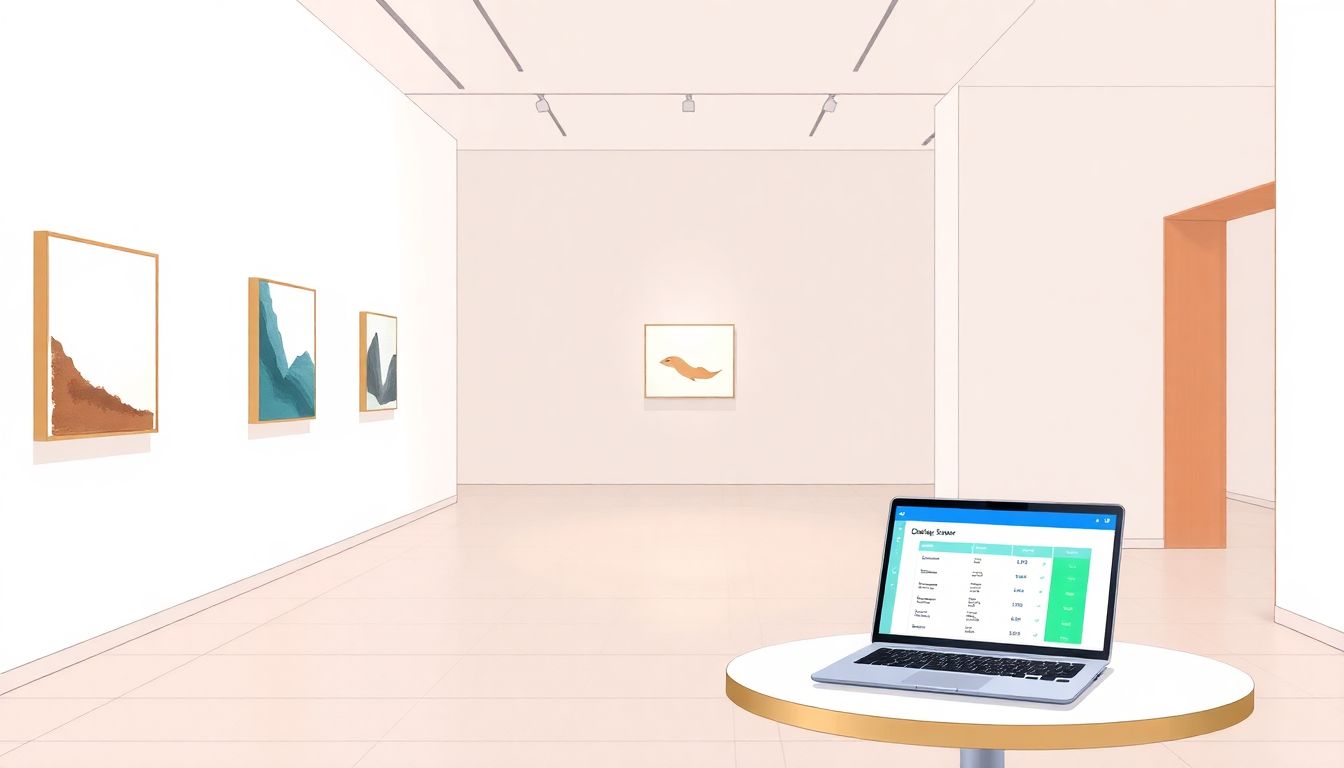Planning a gallery exhibition can be overwhelming, right? With so many moving pieces—from themes and layouts to marketing and artist collaboration—it’s easy to feel lost in the details. You’re definitely not alone in this!
But what if I told you there’s a way to simplify the process? By using the right prompts with ChatGPT, you could find yourself breezing through each stage of your planning. Stick around, and let me show you how to transform your exhibition dreams into a well-organized reality.
From creating catchy themes to designing engaging marketing strategies, we’ll cover essential prompts that will make your gallery exhibition a hit. Let’s dive into this creative journey together!
Key Takeaways
- Use ChatGPT prompts to simplify your gallery exhibition planning process.
- Develop a cohesive theme by identifying your core message and target audience.
- Select artists and arrange works effectively to enhance viewer experience.
- Create engaging descriptions that tell stories and provoke thought.
- Implement social media strategies and community engagement to boost exhibition visibility.
- Organize a detailed schedule and timeline for smooth execution on opening day.
- Gather visitor feedback to improve future exhibitions and attendee experience.
- Foster strong collaboration with artists and curators for a richer exhibition narrative.

Essential ChatGPT Prompts for Gallery Exhibition Plans
Planning a gallery exhibition can feel overwhelming, but with the right ChatGPT prompts, you can streamline the process and generate creative ideas efficiently.
Here are some prompts to get you started:
- “Generate ten innovative exhibition ideas that focus on environmental themes in contemporary art.”
- “Suggest creative concepts for a digital gallery that combines augmented reality with traditional art displays.”
- “Provide a list of effective questions to ask when brainstorming an exhibition title.”
- “How can I create a thematic exhibition that tells a story through artworks?”
- “What are some strategies for incorporating interactive experiences in a gallery setting?”
How to Create a Theme for Your Gallery Exhibition
Creating a theme for your gallery exhibition is vital for engaging your audience and providing a cohesive experience.
Start by brainstorming ideas that resonate with current trends, cultural events, or personal narratives related to the artwork you want to showcase.
Here’s a simple step-by-step approach:
- Identify your core message: What do you want to express through the exhibition?
- Consider your target audience: What themes will resonate with them?
- Research existing themes in art: Find inspiration from past exhibitions.
- Draft potential titles and themes to convey the emotional essence of the exhibit.
- Choose a theme that allows for diverse artworks and audience interpretation.
For example, a theme like “Journey Through Color” could encompass a range of styles and media that explore color significance in art.
Prompts for Organizing Art and Artists in Your Exhibition
Organizing your exhibition involves selecting artists and strategically arranging artworks to enhance viewer experience.
Use these prompts to effectively manage your exhibition:
- “List the key criteria for selecting artists for a group exhibition on social justice.”
- “How should I categorize artworks by medium and style for optimal arrangement?”
- “Propose a layout for a gallery space that encourages visitor flow through various art pieces.”
- “Generate ideas on how to feature emerging artists alongside established names in the exhibition.”
- “What are the best practices for collaborating with artists during the curation process?”
Crafting Engaging Descriptions for Exhibited Works
Engaging descriptions for exhibited works can draw visitors in and enhance their connection to the art.
To create compelling descriptions, focus on storytelling elements and emotional resonance.
Here’s how you can approach it:
- Start by researching the artist’s background and intent behind the artwork.
- Describe the work’s visual elements and what makes them significant.
- Pose open-ended questions to the viewers to provoke thought and discussion.
- Use descriptive language that paints a picture of the artwork in the mind of the reader.
- Keep the tone inviting and accessible for all potential audiences.
You might prompt ChatGPT with: “Create a narrative description for a painting that depicts a serene landscape during sunset, focusing on emotional connections.”
By utilizing these approaches, your exhibition can inspire greater appreciation and understanding of the artworks on display.

Ideas for Marketing and Promoting Your Gallery Exhibition
Marketing and promoting your gallery exhibition is key to attracting visitors and creating buzz in the art community.
Start by identifying your target audience—who would be most interested in your exhibition?
Use the following prompts to help shape your marketing strategies:
- “List effective social media strategies tailored for promoting a gallery exhibition.”
- “Generate a press release template for announcing an upcoming art show.”
- “What are some creative ways to engage the local community in my exhibition?”
- “Suggest collaboration ideas with influencers to amplify my exhibition’s reach.”
- “How can I utilize email marketing to keep my audience informed about the exhibition date and details?”
Consider creating an event page on your gallery’s website and utilize platforms like Eventbrite for ticketing and RSVP.
Also, think about how you can integrate unique elements into your exhibition, such as live art demonstrations or interactive artist talks, to attract more attendees.
Using ChatGPT to Develop Event Schedules and Timelines
Creating a detailed event schedule and timeline ensures your exhibition runs smoothly from start to finish.
Use these prompts to help plan your timeline effectively:
- “Outline a timeline for organizing a gallery exhibition, from initial concept to opening day.”
- “Generate a checklist of tasks to complete one month before an art exhibition.”
- “What are the critical milestones to track in preparing for a gallery show?”
- “Provide a sample schedule for an exhibition opening night, including setup and guest arrival times.”
- “Suggest best practices for managing time effectively during the exhibition week.”
Consider using project management tools or spreadsheets to visualize your timeline and keep track of responsibilities.
This way, everyone involved knows their roles, and you can anticipate any potential issues before they arise.
Generating Feedback Forms and Surveys for Attendees
Gathering feedback from attendees can provide invaluable insights for future exhibitions and enhance visitor experience.
Use these prompts to create engaging feedback forms and surveys:
- “Create a feedback form template for visitors to evaluate their experience at my exhibition.”
- “What questions should I include to assess attendees’ engagement with the artworks?”
- “Generate ideas for incentivizing survey participation, like a raffle entry for a small prize.”
- “Suggest methods for analyzing feedback data effectively after the event.”
- “How can I utilize feedback to inform the planning of future exhibitions?”
Consider digital tools like Google Forms or SurveyMonkey for ease of data collection.
When formulating your questions, keep them clear and concise to encourage honest responses and higher completion rates.
Prompts for Collaboration with Artists and Curators
Strong collaboration with artists and curators can elevate the quality of your exhibition significantly.
Use these prompts to foster effective partnerships:
- “List key qualities to look for in potential artists for a co-curated exhibition.”
- “Suggest a communication plan for maintaining transparent dialogue with participating artists.”
- “What collaborative opportunities exist for exhibitions that involve multiple curators?”
- “Generate questions to ask artists during the selection process that foster creativity.”
- “How can I create a collaborative environment that encourages artistic input from both artists and curators?”
Make sure to establish clear roles and share creative visions during planning sessions.
Engaging artists in discussions about their works not only builds rapport but also enriches the narrative of your exhibition.

Creating a Budget Plan with ChatGPT for Your Exhibition
Creating a budget plan is a crucial step to ensure your exhibition remains financially viable.
To get started, identify all potential costs related to your exhibition, from venue rental to marketing expenses.
Here are some actionable prompts you can use in ChatGPT for budgeting:
- “List potential expenses I need to consider while planning my gallery exhibition.”
- “Create a detailed budget template for a small art exhibition.”
- “Suggest ways to reduce costs without compromising the quality of my exhibition.”
- “Generate tips for seeking sponsorship and funding for my art show.”
- “What should I include in a budget forecast for attendance fees and ticket sales?”
Keep track of your income and expenses using spreadsheets or budgeting apps.
This will help you adjust your plans as needed and ensure a successful exhibition with positive financial outcomes.
Tips for Designing the Layout of Your Gallery Space
Designing an effective layout for your gallery exhibition can enhance the visitor experience significantly.
Start by considering the flow of traffic and how visitors will move through the space.
Here are some tips to optimize your gallery layout:
- “Plan pathways that encourage exploration and engagement with the artwork.”
- “Consider visibility: Arrange artworks in a way that they can be easily seen from various angles.”
- “Create themed areas if relevant, allowing visitors to immerse themselves in specific concepts.”
- “Use signage and lighting to guide the viewer’s journey and highlight key pieces.”
- “Make sure to incorporate areas where visitors can relax and reflect.”
Remember that the goal is to facilitate both the experience of viewing the art and the interaction with other attendees.
Test different layouts using mock-ups or sketches to find the best fit for your unique exhibition.
ChatGPT Prompts for Social Media Engagement Before and After the Exhibition
Engaging with your audience on social media both before and after your exhibition can increase attendance and foster community.
To plan effective social media content, consider using these actionable prompts:
- “Create a content calendar for social media posts leading up to my exhibition.”
- “Generate engaging questions to ask followers that relate to themes in my exhibition.”
- “Suggest post-exhibition content ideas to maintain audience interest.”
- “List strategies for using Instagram Stories to promote my gallery events.”
- “How can I encourage visitors to share their own experiences on social media?”
Leverage testimonials from attendees in your posts to create a buzz around future events.
Utilize hashtags strategically to widen your reach and connect with art enthusiasts.
FAQs
Consider your target audience, current trends, and the type of art being exhibited. A cohesive theme enhances the viewer’s experience, ensuring the exhibition tells a compelling story that engages visitors and encourages exploration.
Utilize social media platforms, local press releases, and email newsletters. Collaborative events, influencer partnerships, and community engagement activities also play important roles in building buzz and attracting attendees to your exhibition.
Create easy-to-complete feedback forms or surveys that attendees can fill out online or at the venue. Asking targeted questions about their experience can provide valuable insights for future exhibitions and improvements.
Establish clear communication channels and define roles early in the planning process. Regular meetings, shared resources, and feedback loops foster collaboration and ensure everyone is aligned with the exhibition’s vision and goals.
